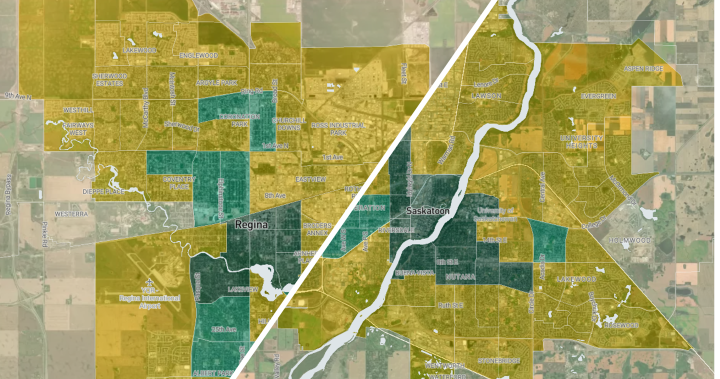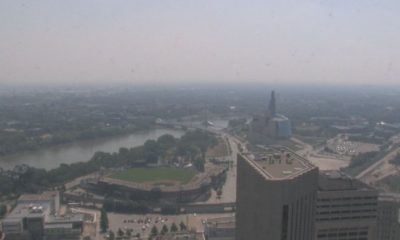General News
Queen’s University study shows suburban sprawl slowing down in the Prairies

Canada is a suburban nation, that is the conclusion of a newly-published study from Queen’s University in Kingston, Ont. Even prairie cities like Saskatoon and Regina have over 70 per cent of residents living in suburban neighbourhoods, but recent data shows this trend is slowing down.
“This came as a big surprise to many people,” said professor David Gordon, one of the co-authors of the Canadian Suburbs Atlas.
“Many see Canada as an urbanized nation, but our study shows that by far suburbs are the way people prefer to live. 78.4 percent of Canadians live in a neighbourhood that can be classified as a suburb.”
A map of Regina showing urban areas in dark green, suburbs in yellow and suburbs with active transit use in light green.
Canadian Suburbs Atlas 2023
Gordon explained that suburbs are both affordable and often pleasant to live in. Owning your own house with a piece of land is very appealing to Canadians.
The study shows that, for the first time ever, suburban development has slowed down in the last five years. According to Gordon, that’s a good thing.
“Nobody is suggesting that we should never build any more suburbs, but there are significant downsides to them and we need to get better at building them,” Gordon said.
“Otherwise, this lifestyle is not going to be sustainable.”
Gordon explained that suburbs cost a lot of money to maintain, have a higher environmental impact and limit mobility. According to him, new developments should adopt more sustainable approaches.
“Saskatoon has been doing well on this front. Developments like Kensington, Stonebridge and Evergreen have a higher density and put a lot less pressure on the existing infrastructure. ”
Suburban development may have slowed down in both Regina and Saskatoon, but is still by far the most common way of living. 81.8 per cent of Regina residents live in a suburban neighbourhood while 71.1 per cent of Saskatoon residents live in suburbs.
A map of Saskatoon showing urban areas in dark green, suburbs in yellow and suburbs with active transit use in light green.
Canadian Suburbs Atlas 2023
The study developed an interactive map to show where the urban and suburban areas in the cities are located. This was able to show that people living near a good public transit line are far more likely to use it and live a more active lifestyle.
“We are so grateful for this map that can compare our research to satellite maps. You would need years to show this correlation between the more mobile suburbs and major transit lines,” Gordon said. “It is very obvious if you look at the CTrain in Calgary or the Skytrain in Vancouver.”
By looking more towards suburban sprawl repair, walkable neighbourhoods and smarter suburb design, Gordon is convinced that the Canadian way of living can be made sustainable.

© 2023 Global News, a division of Corus Entertainment Inc.
Disclaimer: No copyright infringement intended. All rights and credits reserved to respective owner(s).
























